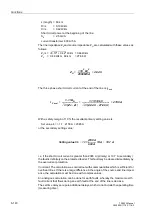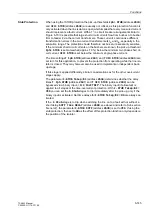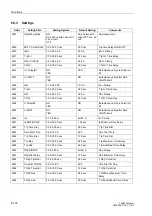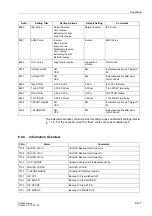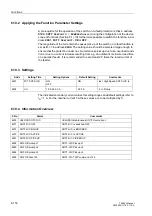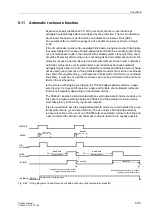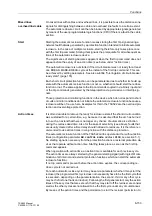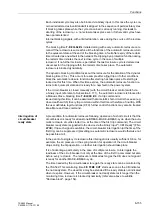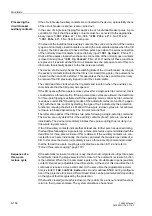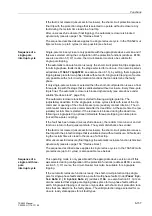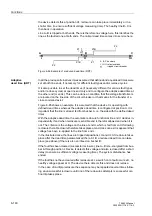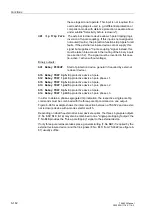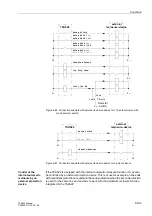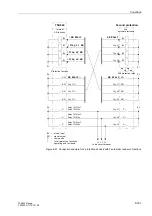
Functions
6-152
7SA522 Manual
C53000-G1176-C119-2
6.11.1 Function description
The integrated automatic reclosure circuit allows up to 8 reclosure attempts.
The first four interrupt cycles may operate with different parameters (action and dead
times, single/three-pole). The parameters of the fourth cycle also apply for the fifth
cycle and onwards.
Selectivity before
reclosure
In order for the automatic reclosure to be successful, all faults on the entire overhead
line must be cleared at all line ends simultaneously — as fast as possible. In the dis-
tance protection, for example, the overreaching zone Z1B may be released before the
first reclosure (zone extension). This implies that faults up to the zone reach limit of
Z1B are tripped without delay for the first cycle (figure 6-83). A limited unselectivity in
favour of fast simultaneous tripping is accepted here because a reclosure will be per-
formed in any case. The normal stages of the distance protection (Z1, Z2, etc.) and
the normal grading of the other short-circuit functions are independent of the automat-
ic reclosure function.
Figure 6-83 Reach control, before the first reclosure, in the distance protection
If the distance protection is operated with one of the signal transmission methods
described in section 6.4 the signal transmission logic controls the
overraching zone, i.e. it determines whether an undelayed trip (or delayed with T1B) is
permitted in the event of faults in the overreaching zone (i.e. up to the reach limit of
zone Z1B) at both line ends simultaneously. Whether the automatic
reclosure device is ready for reclosure or not is irrelevant because the teleprotection
function ensures the selectivity over 100 % of the line length and fast, simultaneous
tripping. The same applies for the earth fault–direction comparison protection (section
6.6 ).
If, however, the signal transmission is switched off or the transmission path is
disturbed, the internal automatic reclosure circuit can determine whether the
overreaching zone (Z1B in the distance protection) is released for fast tripping.
If no reclosure is expected (e.g. circuit-breaker not ready) the normal grading of the
distance protection (i.e. fast tripping only for faults in zone Z1) must apply to retain se-
lectivity.
Fast tripping before reclosure is also possible with multiple reclosures. Appropriate
links between the output signals (e.g. 2nd reclosure ready: "
") and
the inputs for enabling/releasing undelayed tripping of the protection functions can be
established via the binary inputs and outputs or the integrated user-definable logic
functions (CFC).
Z1
Z1
Z1B
Z1B
Z2
Z2
Line
Line
Reach for 1st tripping before reclosure (overreach zone Z1B enabled)
Reach after 1st reclosure (overreach zone Z1B disabled)
Summary of Contents for siprotec 7SA522
Page 20: ...7SA522 Manual C53000 G1176 C119 2 ...
Page 64: ...7SA522 Manual C53000 G1176 C119 2 ...
Page 89: ...SIPROTEC 4 Devices 4 25 7SA522 Manual C53000 G1176 C119 2 Figure 4 20 CFC Logic example ...
Page 408: ...7SA522 Manual C53000 G1176 C119 2 ...
Page 456: ...7SA522 Manual C53000 G1176 C119 2 ...
Page 516: ...7SA522 Manual C53000 G1176 C119 2 ...
Page 620: ...Appendix B 48 ...



